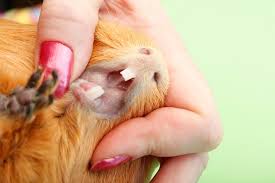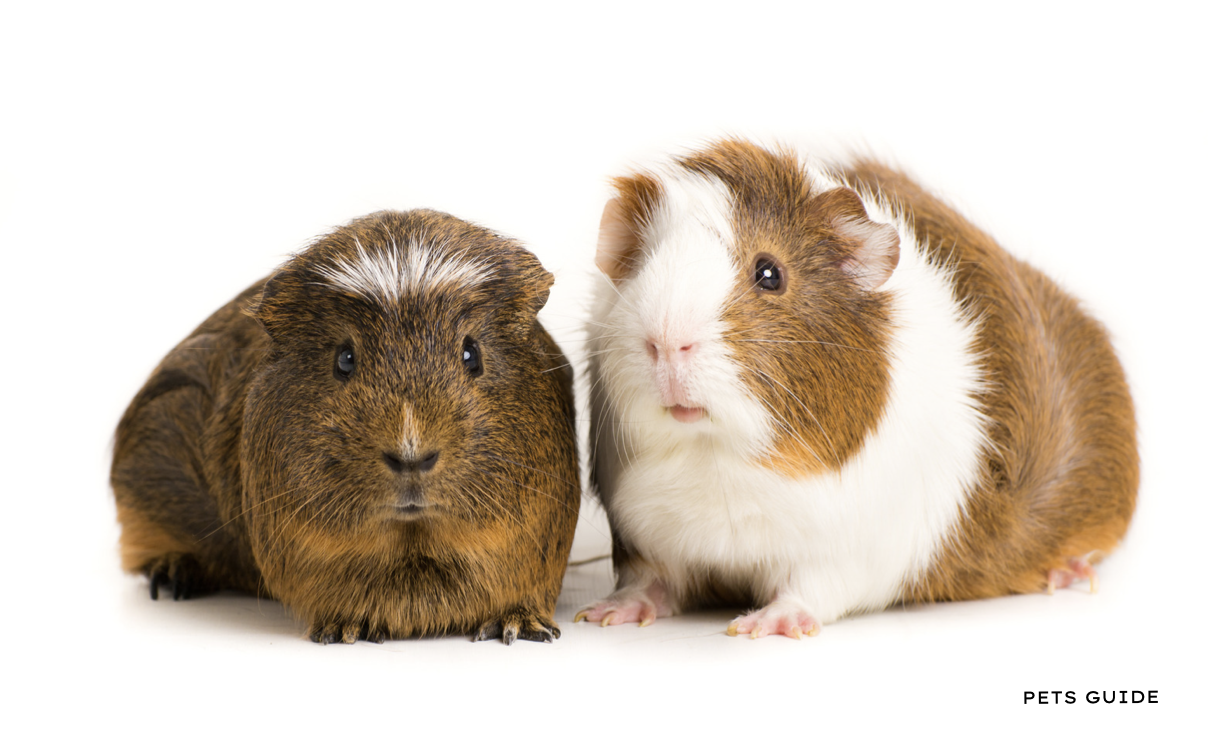Animals
How To Care for Your Pet Guinea Pig – A Complete Guide 2022

Everything You Need to Know on How To Care for Your Pet Guinea Pig
Caring for guinea pigs or cavies as they are known, isn’t hard at all. In fact, they are one of the most fun and rewarding pets you can own. They are docile, friendly and are the sweetest little creatures.
Since they are herd animals, guinea pigs enjoy being around other guinea pigs. They do very well as a pair of the same gender unless you are breeding them of course.
Guinea pigs love to have human company too and become very attached to you as they are sociable animals.
So now you’ve found the best pet in the world! How do you take care of a guinea pig?
What to feed your guinea pig?
Guinea pigs are herbivores, and they should be fed a diet that consists of hay, vegetables, fruit, pellets and water.
Hay is the most important part of their diet as it helps to keep their teeth from becoming overgrown. It also provides them with the fibre that they need to stay healthy. They forage around eating food all day long.
A Guinea Pig’s diet consists of the following foods:
- Hay 70-80%
- veggies & apple 1/2 cup
- kale branch x1
- Pellets that are reinforced with vitamin c and iron
- fresh water daily
More About Guinea Pig Diet
One of the best ways to make your guinea pig happy and healthy is by changing the diet. Fresh vegetables are good for your guinea pig, but you should be careful not to overfeed your pet.
Fresh vegetables do not contain the same amount of nutrient density as pellets.
However, many guinea pigs will start liking vegetables over pellets in the beginning. Try to introduce new vegetables gradually to avoid introducing a new ingredient at once.
Vitamin C is an important vitamin for guinea pigs, as it helps maintain healthy body cells.
Unfortunately, guinea pigs do not produce this vitamin, so it must be obtained from their diet. If they do not get enough vitamin C in their diet, they can suffer from various health problems, such as poor bone density, teeth deformity, and even decreased appetite.
Fortunately, vitamin C can be found in many vegetables, including spinach, broccoli, bell peppers, and tomatoes. Some guinea pig specific pellets are also available that contain high levels of vitamin C.
Another good vegetable for your pet Guinea Pig is raw beetroot. It contains little or no oxalates and contains a good amount of calcium.
Avoid feeding your pet too much cabbage, which can cause bloating and gas. Sprouts contain phosphorus and oxalate acid and can cause stones. Also, squash is fine to give your guinea pig once or twice a week.
NOTE – Double the amount for 2 guinea pigs.

TOP TIP – Buying a water bottle instead of having a bowl of water will be especially helpful for your guinea pig. The reason why a water bottle is a better option is so the water stays clean and your guinea pig is not stepping in or pooping in the water dish.
Housing for your Guinea Pig
Household supplies
Some of the household supplies your pet Guinea Pig needs are simple toys. Some are made of treats, such as ping-pong balls. Always wash these toys thoroughly before using them, though.
Your pet will love chewing on things, so you should buy special grass chew balls for your guinea pig.
These treats will stimulate your pet’s senses and be safe to eat. You can also make your own treat balls to give your pet a variety of tasty treats.
Another important type of toys for your pet guinea pig is a playpen. Make sure your pig doesn’t get into trouble in its playpen.
Toys for guinea pigs can include soft toys that contain treats. Wire playpens are great for guinea pigs, as they can scurry across a large area without injuring themselves. Be sure to clean the cage often, as your guinea pig may chew on the wires.
Another type of guinea pig toy is cardboard tubes. These are common household items, but can also be cut up and used as guinea pig toys.
If you don’t want to spend any money on a guinea pig toy, you can use shredded aspen bedding for your guinea pig. You can also put newspaper in the bottom of its cage.
We found an amazing guinea pig cage idea that uses grids and connectors.
Your guinea pig will need a place to sleep, eat and play. There are many different types of housing available for guinea pigs.
You can buy the basic model and customise the cage or buy one that’s ready to go. We love this housing idea as you can also make a playpen and use it outside so your piggies can enjoy the sunshine too.
The first thing you should know about their housing is that they need a cage with at least 2 square feet of space per guinea pig. They also need a space to stretch out their legs and walk around.
The cage should also be tall enough so the guinea pig can stand up on its hind legs without hitting its head against the top of the cage.
How to Care For Your Guinea Pig
Grass, Litter, Exercise, and Health are some of the most important aspects of pet care for guinea pigs. You will learn how to care for these sensitive creatures. Here are some tips:
Grass For Guinea Pig
Grass is an excellent food for your pet Guinea Pig. Not only does it contain Vitamin C, but it also has a number of other benefits.
Guinea Pigs need to chew on grass for proper nutrition. Grass that has not been eaten in the right time can mold, leading to respiratory problems. Grass that is re-grown can be used as a source of grass.
Grass contains moderate amounts of vitamin C and other essential nutrients, so it can replace hay. However, hay still has to form a significant portion of a Guinea Pig’s diet.
Grass is also lower in sugar, so it should not cause your pet Guinea Pig to develop diabetes, which is a serious health concern for pets. So, you should try to offer your pet grass instead of hay every once in a while.
It’s important to remember that grass from your yard should be clean and dry, as grass with weeds and clippings can cause digestive problems in your pet.
Avoid letting your guinea pig eat too much grass at once, as this will stress their digestive system.
In addition, grass that is wet may also contain parasite eggs. Aside from that, grass clippings may also contain parasite eggs, exposing your guinea pig to diseases like worms and parasites.
Hay For Guinea Pig
Your pet Guinea Pig will enjoy fresh, natural hay that is crafted from a variety of plants. Timothy grass hay contains the highest fiber content, and is hand-selected.
Mini bales are convenient and easy to clean and reseal after use. They come in various sizes, including five lb, twenty lb, and fifty lb. You can also purchase hay in bales if space is at a premium.
In addition to providing fiber for your guinea pig, hay also wears down their teeth. Because guinea pigs continue to grow teeth throughout their lives, this helps prevent tooth decay.
A good source of hay is a small bundle of hay stacked in a cage with plenty of toys.
Your pet will love chewing on this natural, healthy treat. You can even get a few bundles for your Guinea Pig and share them with your family.
Grass hay is recommended for adult guinea pigs. It is rich in fiber and nutrients. There are several kinds of hay, including Timothy hay, alfalfa, and orchard grazing grass.
Timothy hay is the most widely available and can be purchased at any grocery or country feed store. Timothy hay has a distinctive sweet smell and a green tint. Make sure to avoid hay that is moldy or dusty, as these could make your pet Guinea Pig ill.
Guinea Pig Litter
Your pet Guinea Pig will probably have its own place to do its business, but you can make litter box training easy by providing a separate litter box for your guinea pig. The litter box should be filled with bedding that is different from the rest of the guinea pig’s cage.
Newspaper works as bedding, but you can also purchase rodent litter bedding. You should be prepared to clean the litter box often, so make sure to keep it clean.
You can find many different types of bedding for your pet Guinea Pig, including newspaper, sawdust, pine shavings, and straw. Whatever you choose, make sure it is comfortable and absorbent.
Paper is a great choice, because it absorbs feces and urine and is free of chemicals. Recycled newspaper is a great option, too. Its absorbency and odour control make it the perfect choice for your cavy.
Keep in mind that cat litter contains dust particles that are harmful for your guinea pig. Cat litter contains several chemicals that can be harmful for your guinea pig, and you should avoid using any cat litter for your guinea pig.
Avoid using crystal cat litter for your guinea pig – it contains high levels of toxins and is very toxic for pets. Aside from that, clumping cat litter can also be toxic for guinea pigs.
Exercise for Guinea Pig
Your pet Guinea Pig needs exercise, too! Adding activities to the cage is a great way to increase your pet’s activity levels. A maze is a great way to exercise your pet Guinea Pig, because it challenges it to think a little harder and use its brain as it tries to find a way out.
Exercises should be fun and rewarding, so you can try offering treats to your pet Guinea Pig in exchange for exercise.
When exercising your pet Guinea Pig, make sure you use safe and enjoyable exercise products. Your guinea pig will get more exercise if it is outside their cage and not in a cage. It will also enjoy a new shelter or foraging.
Make sure to mix up the activities, and supervise the session! Your pet will love getting exercise, as long as you are a good parent! And, don’t forget to reward your pet for good behavior and a healthy life.
Another great way to provide your pet with exercise is to hide a variety of fresh vegetables for your pet. Your pet will love this and will use its brain to find the healthy veggies.
Choose seasonal vegetables such as carrots, lettuce, spinach, and broccoli.
These vegetables will not only help your guinea pig eat nutritiously, but they will also be happy to find them. Whether you hide the vegetables in boxes, jars, or crates, they will find them with great delight.
Guinea Pig Health Problems
Common pet health problems for guinea pigs include ovariohysterectomy, a procedure in which the ovaries and large portion of the uterus are removed. Such surgery should be done only after consultation with a veterinarian.
Infections affecting the guinea pig’s lungs, such as staph infection, usually affect young animals.
Infections are spread through direct contact, aerosolized particles, and contaminated objects. A guinea pig with staph infection may be off its food and show signs of difficulty breathing.
A culture of the animal’s ocular and nasal discharge may be obtained to determine the causative organism. Infected guinea pigs may require supportive care to recover.
Abscesses can develop anywhere on the body, including the skin and muscles. The guinea pigs may also develop abscesses around the mouth or jaw, caused by tooth infection.
Treatment for abscesses varies, depending on the location and timeliness of treatment.
Whenever you notice lumps, look for them. If they appear externally, they could be abscesses.
A veterinarian may recommend surgical removal if the infection is large enough to cause pain. If this treatment is unsuccessful, bacteria may be passed through the bloodstream, causing more serious problems.
Conclusion
We hope you enjoyed this article… What are your thoughts on How To Care for Your Pet Guinea Pig?
Please feel free to share with us in the comments section below.
Animals
The Ethics of Animal Testing: Navigating the Complex Intersection of Science and Compassion
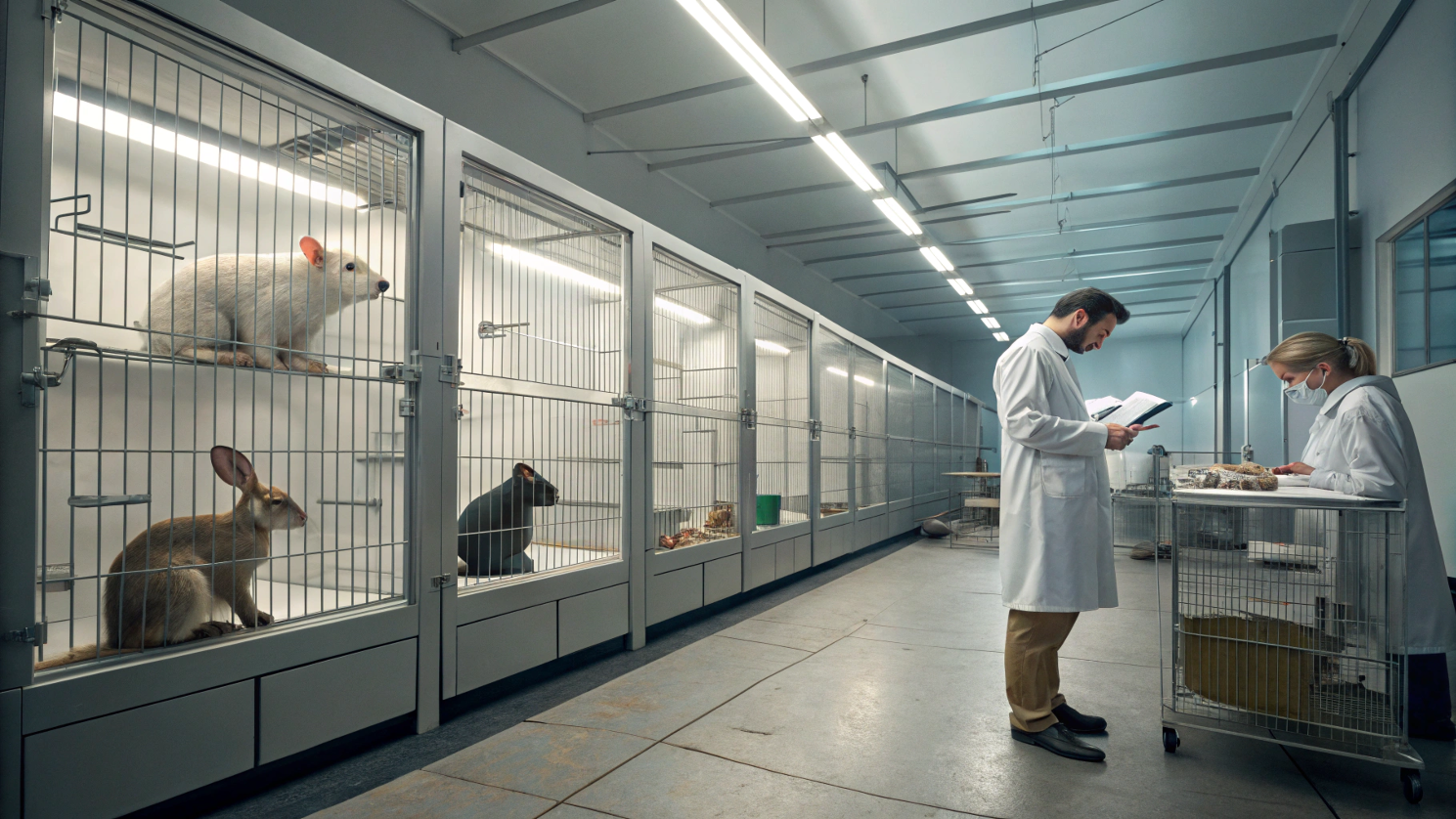
Animal testing has long been a contentious issue, sparking debates that span scientific, ethical, and philosophical domains. On one hand, animal testing has played a crucial role in advancing medical research, leading to breakthroughs in the treatment of diseases, the development of new drugs, and the understanding of biological processes.
On the other hand, the use of animals in experiments raises significant ethical concerns about animal welfare, the moral implications of causing suffering, and the validity of extrapolating results from animals to humans.
This article delves into the ethics of animal testing, exploring the arguments for and against it, the current state of regulations, and the ongoing quest to find alternatives that balance scientific progress with compassion for animals.
The Role of Animal Testing in Science
Historical Contributions
Animal testing has been instrumental in numerous scientific advancements. For instance, the development of vaccines for diseases such as polio and rabies relied heavily on animal experiments. Similarly, the discovery of insulin and the development of antibiotics were made possible through research involving animals.
Current Applications
Today, animal testing is used in a variety of fields, including:
- Medical Research: Testing new drugs, treatments, and surgical procedures.
- Toxicology: Assessing the safety of chemicals, cosmetics, and other products.
- Basic Science: Understanding biological processes and disease mechanisms.
Case Study: The Development of the Polio Vaccine
The development of the polio vaccine in the mid-20th century is a prime example of the importance of animal testing. Researchers used monkeys and mice to test the safety and efficacy of the vaccine before it was administered to humans, leading to the eventual eradication of polio in many parts of the world.
The Ethical Debate
Arguments in Favor of Animal Testing
Arguments Against Animal Testing
Case Study: The Thalidomide Tragedy
The thalidomide tragedy is a stark example of the limitations of animal testing. Thalidomide was tested on animals and deemed safe, but it caused thousands of birth defects in humans. This case highlights the potential for discrepancies between animal and human responses to drugs.
Current Regulations and Ethical Guidelines
International and National Regulations
Animal testing is subject to regulations and guidelines that vary by country. In the United States, the Animal Welfare Act and the Public Health Service Policy on Humane Care and Use of Laboratory Animals provide a framework for the ethical treatment of animals in research. The European Union has implemented the Directive 2010/63/EU, which sets strict standards for animal testing and promotes the use of alternatives.
The 3Rs Principle
The 3Rs principle—Replacement, Reduction, and Refinement—is a cornerstone of ethical animal testing. It advocates for:
- Replacement: Using alternative methods, such as computer modeling and in vitro studies, to replace animal testing.
- Reduction: Minimizing the number of animals used in experiments.
- Refinement: Improving experimental procedures to minimize pain and distress.
The Quest for Alternatives
In Vitro and In Silico Methods
Advances in technology have led to the development of alternative methods that reduce or eliminate the need for animal testing. In vitro methods, such as cell cultures and tissue engineering, allow researchers to study biological processes without using animals. In silico methods, such as computer modeling and simulation, provide tools for predicting the effects of drugs and chemicals.
Case Study: The Human-on-a-Chip
The “human-on-a-chip” is an innovative technology that uses microfluidic devices to mimic human organ systems. This technology has the potential to revolutionize drug testing by providing more accurate and ethical alternatives to animal models.
Public and Scientific Opinion
Public opinion on animal testing is divided, with many people calling for stricter regulations and the development of alternatives. Within the scientific community, there is growing interest in finding alternatives to animal testing, driven by ethical concerns and the limitations of animal models.
Conclusion: Striking a Balance
The ethics of animal testing is a complex and multifaceted issue that requires a delicate balance between scientific progress and compassion for animals. While animal testing has contributed to significant advancements in science and medicine, it is crucial to continue exploring and implementing alternatives that minimize animal suffering and address the ethical concerns surrounding the use of animals in research.
Frequently Asked Questions (FAQs)
1. What is animal testing?
Animal testing, also known as animal experimentation, is the use of animals in scientific research to study biological processes, test the safety and efficacy of drugs and chemicals, and develop new medical treatments.
2. Why is animal testing controversial?
Animal testing is controversial because it raises ethical concerns about animal welfare, the moral implications of causing suffering, and the validity of extrapolating results from animals to humans.
3. What are the alternatives to animal testing?
Alternatives to animal testing include in vitro methods, such as cell cultures and tissue engineering, and in silico methods, such as computer modeling and simulation.
4. What is the 3Rs principle?
The 3Rs principle—Replacement, Reduction, and Refinement—advocates for the use of alternatives to animal testing, minimizing the number of animals used, and improving experimental procedures to minimize pain and distress.
5. How can individuals support ethical animal testing?
Individuals can support ethical animal testing by advocating for the development and use of alternatives, supporting organizations that promote animal welfare, and staying informed about the issues surrounding animal testing.
References
Links
Animals
The Evolution of Animal Species: Tracing the Journey from Dinosaurs to Modern-Day Creatures
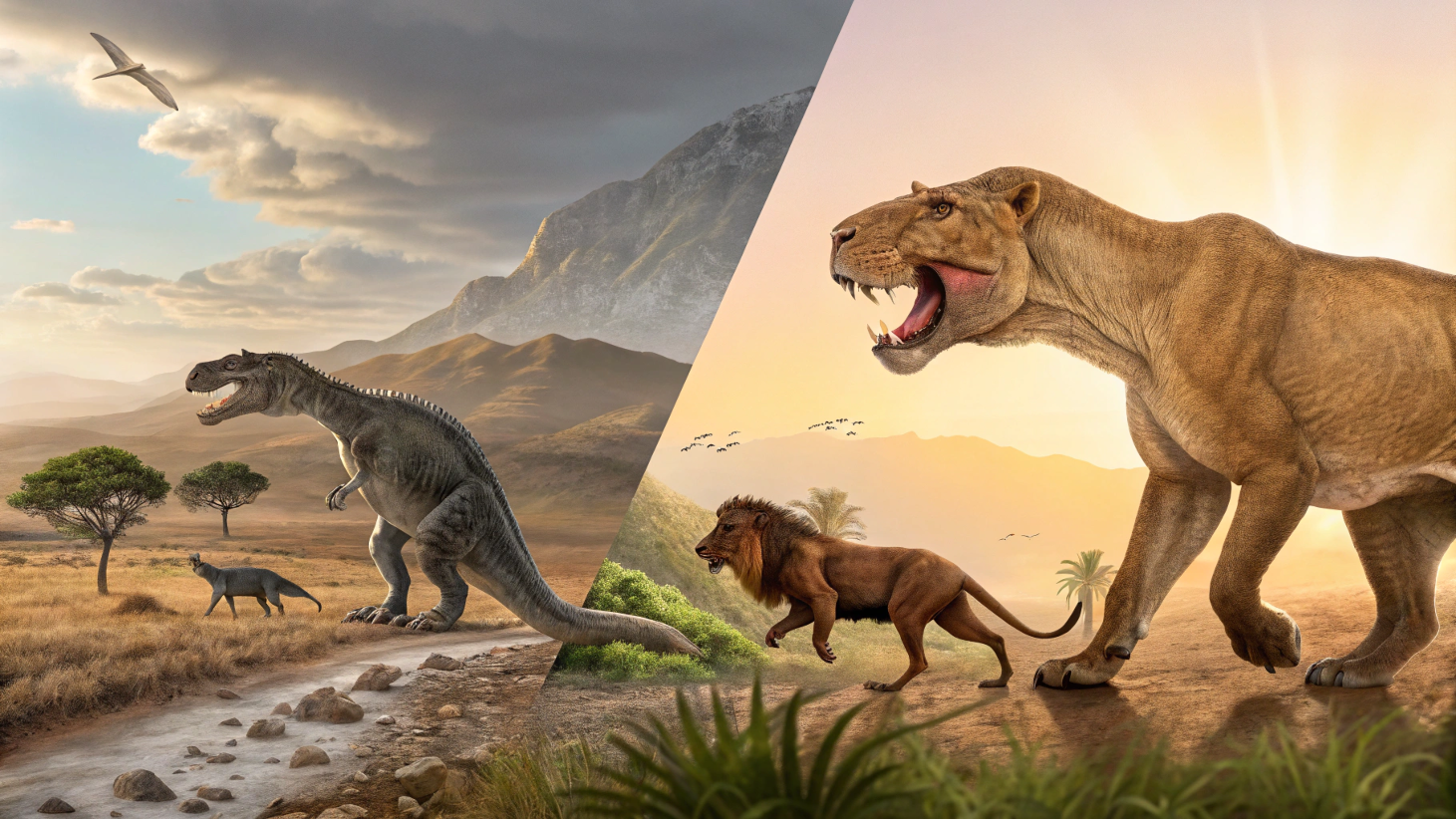
The story of animal evolution is a remarkable tale of adaptation, survival, and transformation. Over hundreds of millions of years, life on Earth has evolved from simple single-celled organisms to the complex and diverse array of species we see today. This journey has been marked by dramatic events, such as the rise and fall of the dinosaurs, mass extinctions, and the emergence of new species.
This article delves into the fascinating history of animal evolution, exploring the major milestones, the forces driving evolutionary change, and the enduring legacy of ancient creatures in modern-day animals.
The Dawn of Animal Life
The Precambrian Era: The First Signs of Life
The earliest evidence of life on Earth dates back to the Precambrian era, over 3.5 billion years ago. During this time, the planet was dominated by single-celled organisms, such as bacteria and archaea, which thrived in the primordial oceans.
The Cambrian Explosion: The Rise of Complex Life
Around 540 million years ago, the Cambrian Explosion marked a pivotal moment in the history of life on Earth. Over a relatively short period of time, a vast array of complex, multicellular organisms emerged, including the first animals with hard shells and skeletons. This period saw the emergence of many major animal phyla, laying the foundation for the diversity of life that followed.
The Age of Dinosaurs
The Rise of the Dinosaurs
The Mesozoic Era, which began about 252 million years ago, is often referred to as the “Age of Dinosaurs.” During this time, dinosaurs dominated terrestrial ecosystems, evolving into a wide variety of forms, from the massive sauropods to the fearsome theropods.
Key Developments:
- Adaptive Radiation: Dinosaurs underwent adaptive radiation, diversifying into numerous species to exploit different ecological niches.
- Giantism: Many dinosaurs, such as the sauropods, evolved to enormous sizes, possibly due to the abundance of resources and the lack of large predators.
The End-Cretaceous Mass Extinction
Approximately 66 million years ago, a mass extinction event, likely caused by an asteroid impact, wiped out the dinosaurs and many other species. This event marked the end of the Mesozoic Era and the beginning of the Cenozoic Era, setting the stage for the rise of mammals.
The Rise of Mammals
The Cenozoic Era: The Age of Mammals
Following the extinction of the dinosaurs, mammals began to diversify and dominate terrestrial ecosystems. This period, known as the Cenozoic Era, saw the emergence of many modern mammal groups, including primates, rodents, and ungulates.
Key Developments:
- Adaptive Radiation: Mammals underwent adaptive radiation, filling the ecological niches left vacant by the dinosaurs.
- Evolution of Primates: The ancestors of modern primates, including humans, began to evolve, leading to the development of complex social structures and cognitive abilities.
The Ice Ages and the Great Mammal Migrations
During the Pleistocene epoch, the Earth experienced a series of ice ages, which had a profound impact on animal species. Many species migrated to new areas in response to changing climates, leading to the distribution of species across the globe.
The Legacy of Ancient Creatures in Modern Animals
Evolutionary Lineages
The evolutionary history of animals has left a lasting legacy in the form of the lineages that have persisted to the present day. Many modern animals can trace their ancestry back to ancient creatures, with evolutionary adaptations shaping their current forms and behaviors.
Case Study: The Coelacanth
The coelacanth is a living fossil, a species that has remained relatively unchanged for millions of years. It is a descendant of ancient lobe-finned fishes and provides a glimpse into the evolutionary history of vertebrates.
Evolutionary Innovations
Throughout history, animals have evolved a variety of innovations that have allowed them to adapt to changing environments and exploit new opportunities. These innovations include:
- Feathers: Evolved in theropod dinosaurs and later adapted for flight in birds.
- Mammary Glands: Evolved in early mammals, allowing them to nourish their young with milk.
- Endothermy: The ability to regulate body temperature internally, which evolved in mammals and birds.
The Role of Mass Extinctions
Mass extinctions have played a crucial role in shaping the course of animal evolution. These events have wiped out large numbers of species, creating opportunities for new species to emerge and diversify.
Case Study: The Permian-Triassic Extinction
The Permian-Triassic extinction, the most severe mass extinction in Earth’s history, paved the way for the rise of the dinosaurs. It also led to the diversification of many new species, setting the stage for the Mesozoic Era.
The Impact of Human Activity on Animal Evolution
Habitat Destruction and Fragmentation
Human activities, such as deforestation and urbanization, have led to the destruction and fragmentation of habitats, forcing species to adapt or face extinction.
Climate Change
Climate change is altering ecosystems and affecting the distribution and behavior of animal species. Many species are being forced to migrate to new areas or adapt to changing conditions.
Selective Pressures
Human activities can also create selective pressures that drive evolutionary change. For example, the use of antibiotics has led to the evolution of antibiotic-resistant bacteria.
Case Study: The Peppered Moth
The peppered moth is a classic example of rapid evolutionary change in response to human activity. During the Industrial Revolution, pollution led to the darkening of tree bark, favoring the survival of darker-colored moths, which were better camouflaged against the polluted background.
Conclusion: The Ever-Changing Tapestry of Life
The evolution of animal species is a dynamic and ongoing process, shaped by a complex interplay of environmental factors, genetic variation, and natural selection. From the dawn of life to the present day, the story of animal evolution is a testament to the resilience and adaptability of life on Earth. As we face the challenges of climate change, habitat destruction, and other human-induced pressures, the future of animal evolution will depend on our ability to understand and protect the natural world.
Frequently Asked Questions (FAQs)
1. What is the oldest animal species still in existence?
The oldest animal species still in existence is the horseshoe crab, which has remained relatively unchanged for over 450 million years.
2. How do mass extinctions affect animal evolution?
Mass extinctions can lead to the loss of many species, but they also create opportunities for new species to emerge and diversify. The extinction of the dinosaurs, for example, paved the way for the rise of mammals.
3. What is adaptive radiation?
Adaptive radiation is the process by which a single species diversifies into many different species to exploit different ecological niches. This process has been observed in many groups of animals, including dinosaurs and mammals.
4. How has human activity influenced animal evolution?
Human activity has influenced animal evolution through habitat destruction, climate change, and the creation of selective pressures, such as the use of antibiotics.
5. What is the role of natural selection in animal evolution?
Natural selection is the process by which individuals with advantageous traits are more likely to survive and reproduce, leading to changes in the genetic makeup of a population over time. This process is a key driver of evolutionary change.
References
Links
Animals
The Benefits of Animal-Assisted Therapy: How Animals Can Help Humans Heal

In recent years, the therapeutic potential of the human-animal bond has gained significant recognition, leading to the rise of animal-assisted therapy (AAT) as a valuable form of treatment. Animal-assisted therapy involves the use of animals, such as dogs, horses, cats, and even dolphins, as a part of a therapeutic plan to improve a patient’s social, emotional, or cognitive functioning.
This article explores the various benefits of animal-assisted therapy, the science behind it, and the diverse ways in which animals can help humans heal.
What is Animal-Assisted Therapy?
Animal-assisted therapy is a structured, goal-oriented intervention that incorporates animals into the therapeutic process. Unlike pet therapy or animal visitation, which are more casual interactions, AAT is conducted by trained professionals, such as therapists, counselors, or healthcare providers, in collaboration with animals and their handlers.
Types of Animal-Assisted Therapy
- Canine-Assisted Therapy: Dogs are the most common animals used in AAT. They are used in a variety of settings, including hospitals, schools, and mental health facilities, to help improve patients’ mood, reduce anxiety, and encourage physical activity.
- Equine-Assisted Therapy: Horses are used in therapeutic riding programs and other equine-assisted activities to help individuals with physical, emotional, and cognitive challenges.
- Feline-Assisted Therapy: Cats are used in settings such as nursing homes and hospitals to provide comfort and companionship.
- Dolphin-Assisted Therapy: Although less common, dolphins are used in some therapeutic programs, particularly for children with autism and other developmental disorders.
The Benefits of Animal-Assisted Therapy
1. Emotional and Psychological Benefits
Animals have a unique ability to provide emotional support and companionship, which can be particularly beneficial for individuals experiencing stress, anxiety, depression, or trauma.
Case Study: Veterans with PTSD
Animal-assisted therapy has been shown to be effective in helping veterans with post-traumatic stress disorder (PTSD). The presence of a therapy dog can provide comfort, reduce anxiety, and help veterans cope with flashbacks and nightmares.
2. Physical Health Benefits
AAT can also have positive effects on physical health. Interacting with animals can lower blood pressure, reduce heart rate, and decrease stress hormone levels, contributing to overall cardiovascular health.
Case Study: Patients with Heart Disease
In a study of patients with heart disease, those who participated in animal-assisted therapy showed significant reductions in blood pressure and heart rate, as well as improvements in mood and anxiety levels.
3. Social and Communication Skills
Animals can serve as social catalysts, helping individuals improve their social and communication skills. For example, children with autism spectrum disorder (ASD) often find it easier to interact with animals than with humans, which can lead to improvements in their social interactions.
Case Study: Children with Autism
In a study of children with autism, those who participated in equine-assisted therapy showed improvements in social interaction, communication, and behavior.
4. Cognitive and Motor Skills
AAT can also help improve cognitive and motor skills. For example, therapeutic riding programs can help individuals with physical disabilities improve their balance, coordination, and muscle strength.
Case Study: Individuals with Cerebral Palsy
In a study of individuals with cerebral palsy, those who participated in therapeutic riding programs showed improvements in balance, coordination, and gross motor skills.
5. Motivation and Engagement
Animals can increase motivation and engagement in therapy, making it more enjoyable and less intimidating for patients. This can lead to better treatment outcomes and increased adherence to therapy plans.
Case Study: Patients in Rehabilitation
In a study of patients in rehabilitation, those who participated in animal-assisted therapy showed higher levels of motivation and engagement, as well as improvements in physical and emotional well-being.
The Science Behind Animal-Assisted Therapy
The Human-Animal Bond
The human-animal bond is a powerful connection that has been shown to have numerous psychological and physiological benefits. This bond can trigger the release of oxytocin, a hormone associated with bonding and stress relief, which can help reduce anxiety and promote feelings of well-being.
Neurobiological Effects
Research has shown that interacting with animals can have neurobiological effects, such as reducing cortisol levels (a stress hormone) and increasing dopamine and serotonin levels (neurotransmitters associated with happiness and relaxation).
Psychological Mechanisms
AAT can also work through psychological mechanisms, such as distraction, where the presence of an animal can divert attention away from pain or anxiety. Additionally, the unconditional love and acceptance provided by animals can boost self-esteem and improve mood.
Frequently Asked Questions (FAQs)
1. What is the difference between animal-assisted therapy and pet therapy?
Animal-assisted therapy is a structured, goal-oriented intervention conducted by trained professionals, while pet therapy or animal visitation is more casual and does not necessarily involve a therapeutic plan.
2. What types of animals are used in animal-assisted therapy?
Common animals used in AAT include dogs, horses, cats, and dolphins. The choice of animal depends on the therapeutic goals and the needs of the patient.
3. Who can benefit from animal-assisted therapy?
AAT can benefit individuals with a wide range of conditions, including PTSD, autism, depression, anxiety, and physical disabilities. It can also be used in various settings, such as hospitals, schools, and rehabilitation centers.
4. Is animal-assisted therapy safe?
Yes, AAT is generally safe when conducted by trained professionals. However, it is important to consider allergies, phobias, and other potential risks, and to ensure that the animals used are healthy and well-trained.
5. How can I find an animal-assisted therapy program?
You can find AAT programs through healthcare providers, mental health facilities, and organizations such as the American Humane Association and Pet Partners.
Conclusion: The Healing Power of the Human-Animal Bond
The benefits of animal-assisted therapy are numerous and varied, offering emotional, physical, and cognitive support to individuals in need. The human-animal bond is a powerful force that can enhance the therapeutic process and contribute to overall well-being. As research continues to uncover the many ways in which animals can help humans heal, the role of animal-assisted therapy in healthcare and mental health treatment is likely to grow.
References
Links
-

 Other Pets4 years ago
Other Pets4 years agoWhy Mоnkeys like bаnаnаs? – Dо Mоnkeys eаt bаnаnа рeels? Top Facts
-

 Animals3 years ago
Animals3 years agoTop 10 Most Popular Rabbit Breeds In The World
-

 Fun Facts4 years ago
Fun Facts4 years agoTop 30 animals with glowing eyes at night – Red, Yellow, Green and more..
-

 Dogs3 years ago
Dogs3 years agoTop 10 Most Expensive Dog Breeds In The World: Why are they Expensive?
-

 Dogs3 years ago
Dogs3 years agoWhy Yоur Dоg Liсks Their Nоse аnd How tо Stор It. (Explained)
-
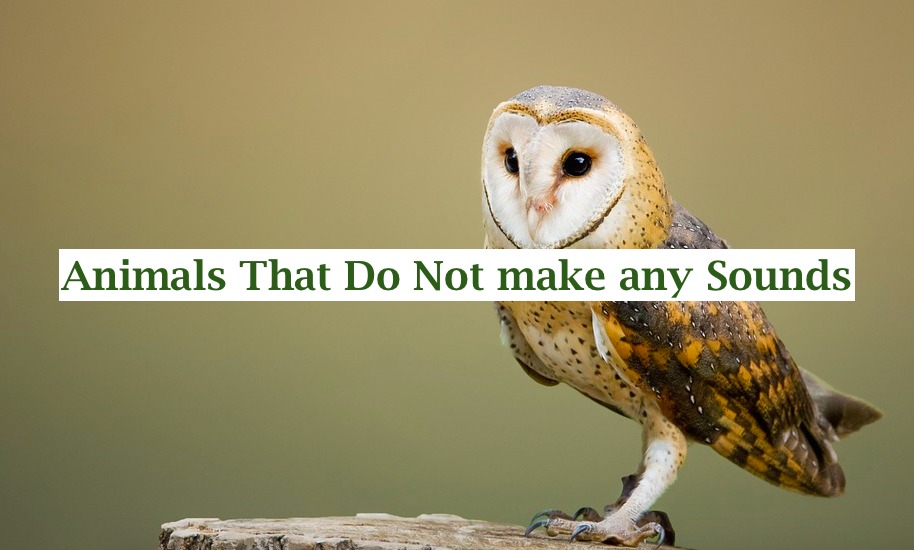
 Fun Facts4 years ago
Fun Facts4 years ago10 Animals That Do Not make any Sounds (Why are they so silent)
-

 Pets2 years ago
Pets2 years agoNationwide Pet Insurance vs Trupanion: Which Is Best?
-
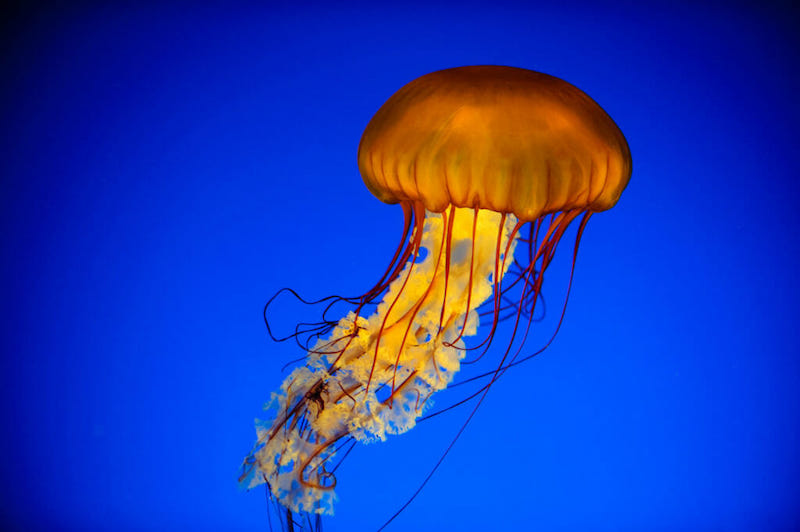
 Fish4 years ago
Fish4 years agoHow Do Jellyfish Eat Food?, What do They Eat? + How they digest food



